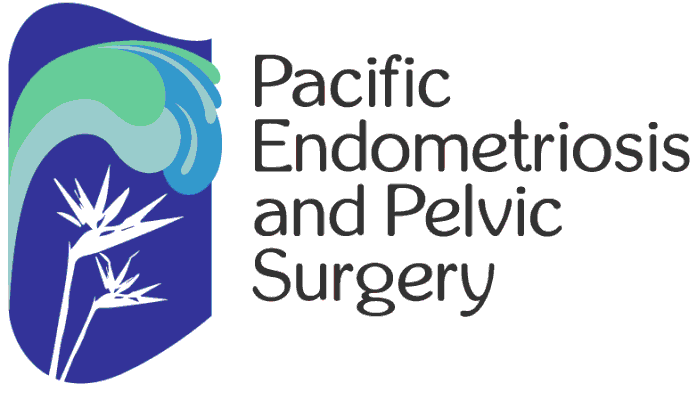Download Word Doc – Download PDF
Are you considering surgery to evaluate and treat endometriosis? Here are some questions to ask your surgeon.
Reasoning behind questions listed below. The GOLD STANDARD of treatment of endometriosis is excision of peritoneum containing the disease. If performed by a skilled specialist, then the recurrence/persistent disease risk is very low. Ablation will ONLY burn the surface of the disease. It does not remove the diseased tissue.
Is the plan to look and document?
If a surgeon is not experienced with excision of endometriosis, then they should not proceed with surgery. Photo documentation and close up views of the peritoneum are more important than potential damage of an inexperienced surgeon.
Is the plan to treat?
If the surgeon performs excision, then this should be the plan at the time of surgery.
How do you treat endometriosis?
- Do you biopsy or do you excise the endometriosis?
- Do you fulgurate, burn, or ablate endometriosis?
The Gold standard for treatment of endometriosis is excision. Removal of surrounding border and diseased tissue below the surface further reduces the risk of recurrence/persistent disease. Please reconsider surgeon if they perform ablation/burning of endometriosis.
If you excise endometriosis, then what are the average sizes of peritoneum removed?
- Are they millimeters?
- Are they centimeters?
- If there are three small endometriosis lesions in one area, then do you remove all of them separately or do you perform a wide excision of the peritoneum containing the disease?
- If the endometriosis lesion is deep, then do you remove all the disease or only superficial disease?
It is difficult to know microscopically how far the endometriosis cells exist outside of the visible disease. Therefore, a wide excision in centimeters (with preservation of vessels and nerves) is recommended over small (millimeters) specimens.
How many excision procedures do you perform in a month?
- If you’re not comfortable with excision of endometriosis, then will you fulgurate the disease or document and then terminate the procedure and refer to another surgeon?
It is important to know what type of experience your surgeon has and how often they perform excision procedures. If your surgeon does not perform excision, then please do not have them perform ablation of endometriosis.
How do you label your specimens?
- Do you send each specimen separately?
- Do you send all specimens together?
- How do you know where the disease/endometriosis is located if all specimens are sent together?
Individual labeling of specimens excised is important for disease location. If you must undergo additional surgeries in the future, then it will help pinpoint where disease was previously seen (especially if it was ablated and not removed).
For endometriomas:
- How do you treat them?
- Do you only drain them?
- Do you excise them in their entirety (cyst wall)?
- Do you remove the entire ovary?
It is not helpful to only drain an endometrioma. It usually will make everything worse; they will usually fill back up, and may damage the fallopian tube beyond repair. The best treatment is excision of the endometrioma cyst wall. If you are working with an REI (reproductive physician), then a joint decision between you, the endometriosis surgeon, and REI should occur prior to surgery regarding the surgical plan.
- How do you manage the defect left after cystectomy? Do you use cautery, or do you close the ovary?
- Do you perform cystectomies regularly?
- If you’re not comfortable with a complete cystectomy, then do you terminate the procedure or do you drain and then end the procedure?
When an endometrioma is removed, it appears similar to removing the pulp from an orange. Closing this ‘dead’ space and re-approximating the edges of the ovary will help with hemostasis (stop any bleeding) and re-establish normal ovarian structure. Suspending (‘tying’) the ovary to the round ligament will help to prevent the ovary from sticking to the sidewall/bowel/uterus/cul de sac. If IVF is in the future, then a temporary ovarian suspension may be performed in order to allow future access to ovaries for egg retrieval.
For suspected bowel endometriosis:
- Do you suspect bowel disease?
- Do you perform appendectomies if they appear abnormal?
If an ultrasound or MRI is not performed by a specialist, then bowel disease may be missed. Please ask your surgeon if the radiologist and/or ultrasonographer is familiar with endometriosis on the bowel.
- Do you perform partial discoid bowel resection?
- Do you work with a general surgeon or colorectal surgeon who understands and/or works with endometriosis involving the bowel?
- If bowel disease is present, then do you attempt surgery or do you terminate the procedure and refer to another surgeon?
Depending on your location and hospital specialists, it may be difficult to have a team who specializes in endometriosis excision. Please ask if your surgeon works with a general surgeon for bowel endometriosis. It is best to have a plan in place, instead of attempting to remove bowel endometriosis without the proper backup when needed.
Post-operative planning:
- Do you provide a copy of the operative report/pictures/pathology report?
- What is the plan for post operative pain management?
- Do you recommend pelvic floor physical therapy?
Generally, you should receive a copy of the your operative report, pictures, and pathology report. It is best to keep this for your own medical records. It is very important if you undergo future surgeries with another surgeon. Ask your surgeon what the post operative plan is and expectations. Pelvic floor physical therapy is important following surgery if there is any underlying pelvic floor dysfunction or bladder/bowel dysfunction.

